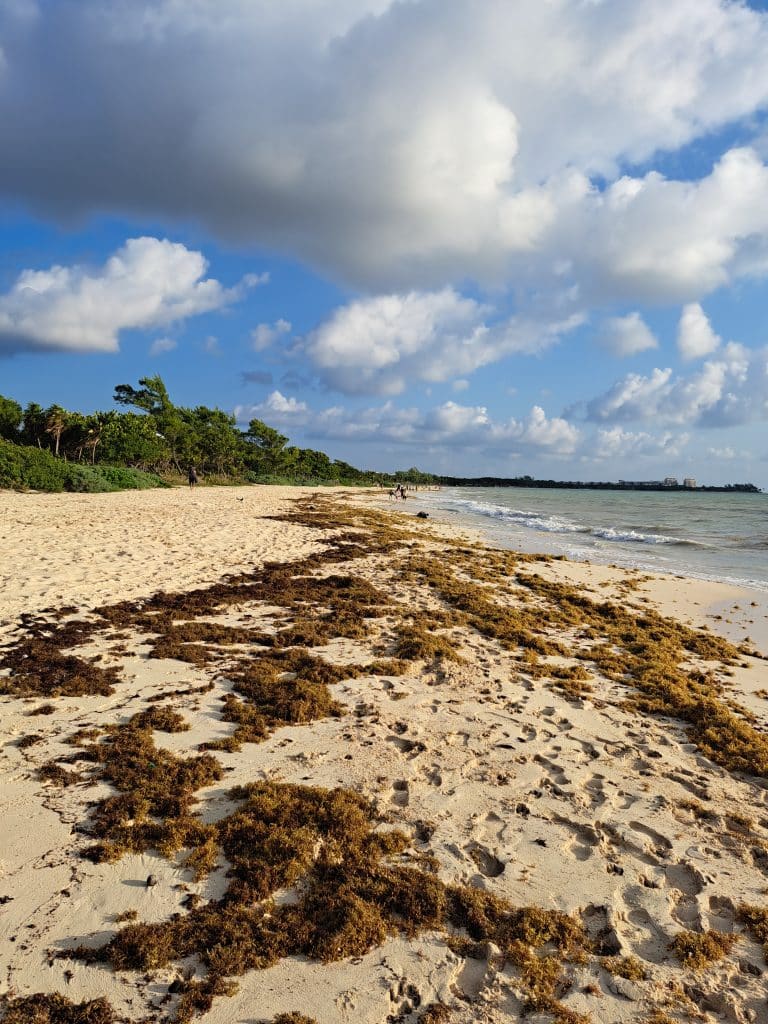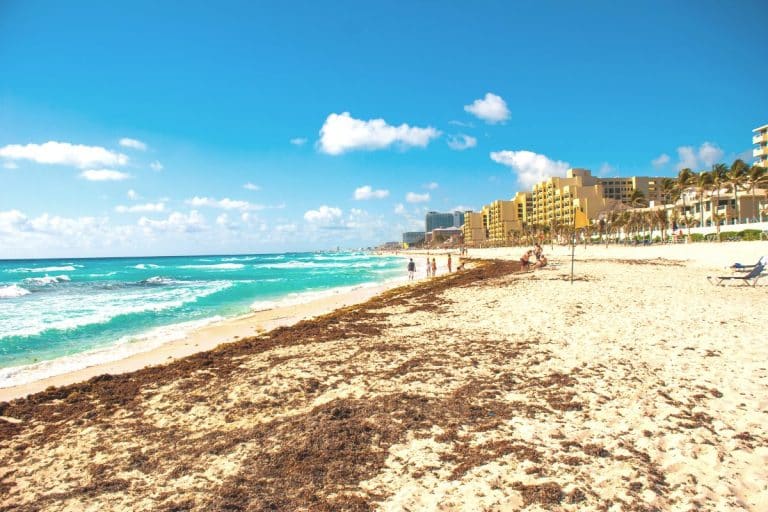As the city approaches the start of the macroalgae season, sargassum is slowly but surely making a comeback in Cancun.
Sargassum, a nuisance seaweed that washes up on local shores, has been a problem for vacationers visiting Cancun and the Mexican Caribbean for several months.
Suggested: Cancun Sargassum Seaweed Forecast for 2023
This week, however, the sargassum season began when authorities discovered significant amounts of seaweed on at least 7 beaches in Cancun.
This week, a month and a half before the official start of the seaweed season in the Mexican Caribbean, local environmental officials recorded the first major appearance of sargassum seaweed in Cancun. Authorities predict a record sargassum season this year as climate change continues to warm the world’s oceans, producing ideal conditions for more seaweed to bloom.
The last few months have been ideal for beachgoers, with little evidence of the foul-smelling seaweed on Cancun’s beaches. But this week, the situation began to change when authorities discovered significant amounts of sargassum on seven Cancun beaches. Del Nino, Las Perlas, Chacmool, Ballenas, Marln, Delfines and Nizuc playa Coral are now the most affected beaches.
Forecasts indicate that more sargassum could wash up on Cancun beaches in the coming weeks, prompting authorities to begin cleanup efforts.
About 180 employees will work around the clock this season to rid Cancun’s main beaches of sargassum, according to Zofemat, the local environmental agency responsible for maintaining public beaches. Although the number of employees remains the same as last year, the city is working with volunteer groups and resorts to maximize efficiency.

Authorities are concerned about maintaining beaches in top condition because 2023 is predicted to be a record-breaking year for tourism in Cancun and the Mexican Caribbean. After all, the smooth white sand beaches of the Mexican Caribbean are among the main attractions, therefore untidy beaches can jeopardize the area’s otherwise stellar reputation.
Officials in the Mexican Caribbean are getting ready for the upcoming sargassum season, which is predicted to break past records as well. More money is being spent on anti-sargassum technology, which includes barriers, cleaning tools, and even facilities that turn trash into byproducts from sargassum.
A recent study from the University of Southern Florida suggests that sargassum levels in 2023 could be among the highest ever recorded. According to information obtained from NASA and many universities, there could be as much as 6 million tons of Sargassum seaweed floating in the Atlantic Ocean.

